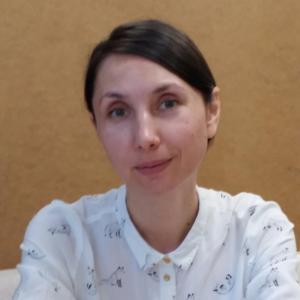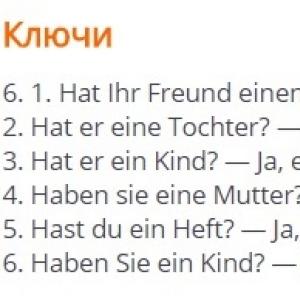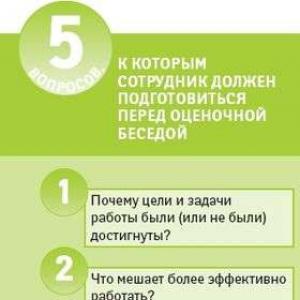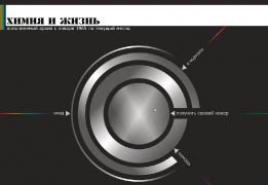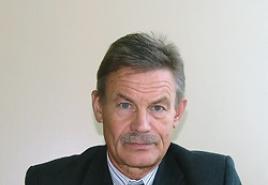Punctuation marks. What punctuation marks are there? Review of all existing ones! Well, what a beauty, what a punctuation mark
Along with the emergence of writing, there also appeared the need to somehow indicate to the reader that the sentence was finished. The ancestors of the modern dot are a straight vertical line (Sanskrit) and a circle (。, language). In Russian, the dot was first recorded in the monuments of ancient writing. Traditionally, a period is placed at the end of every sentence, except in headings and when sentences end with an ellipsis, a question mark, or an exclamation mark combined with quotation marks.Colon
Although this sign appeared much later than the dot, it entered Russian grammar at the end of the 16th century. It was used by Lavrenty Tustanovsky, the compiler of one of the first textbooks of Slavic philology. Most often, a colon is placed before a listing or when forming direct speech (), but there are also such complex cases of its placement as the use of a colon instead of a conjunction. For example, between sentences when describing sensations: “We reached the river, we see: it is floating, but there is no one in it.”Ellipsis
The sign of pause, incompleteness, speech hesitation - the ellipsis - is described in the “Grammar of the Church Slavonic Language” by Pushkin’s contemporary Alexander Vostokov, however, some researchers note that the ellipsis was encountered earlier, and Vostokov was only enshrined in scientific work, and in “Grammar” it also called a “stop sign”...Comma
“A period with a squiggle” competes with a period for first place among the most common punctuation marks in the Russian language. In an average complexity text of 1000 characters there may not be a single dash, not a single pair of quotes or parentheses, but there will definitely be commas. And if the author turns out to be a lover of phrases and introductory words, then the comma will become a champion. The word “comma,” according to the Soviet linguist Pavel Chernykh, comes from “comma” (“hook”), but the sign itself is borrowed from the Italian language.Semicolon
Another Italian invention that moved into the Russian language along with printing. This sign was invented and introduced into written language in the mid-15th century by the typographer Aldus Manutius. Using a semicolon, he separated parts of sentences that were connected by meaning but had independent syntax. In Russian it is used for the same purpose, as well as in complex enumerations.Dash
There is no exact information about the origin of the dash. “Dashes” approximately corresponding to its meaning are found in many ancient written artifacts. It owes its modern name to France (tiret from tirer, to pull), and in Russian, as most researchers believe, it was popularized by Karamzin, during whose time this sign was called “silent”. It is used in many cases, the most famous of which are when the subject and predicate are expressed in one part of speech, as well as in the design of remarks and dialogues. In Russian typography, the em dash (-) is used, and it is always separated from the previous and subsequent words by spaces, with the exception of its use in intervals (August 1-8), although increasingly in such cases an en dash, “English” dash (1-8) is used. 8 August).Question and exclamation marks
Both signs appeared in the Russian language at approximately the same time, in the middle of the 2nd millennium AD. Both are from the Latin language, where the question mark used to be a graphic abbreviation (ligature) of the letters Q and O (from quaestio, question) and was used in cases where it was necessary to indicate doubt, and the exclamation mark from an exclamation of surprise lo. Gradually, both ligatures became independent non-literal punctuation marks, and received their original name from the dots: “question point” and “surprise point.”Brackets
The paired sign, today called parentheses, once had the very beautiful name “capacious” or “container sign.” Brackets came into languages, including Russian, from mathematics, and specifically from the notation introduced by the Italian Niccolo Tartaglia for radical meanings. Later, mathematicians will prefer square and curly brackets for various needs, and round brackets will remain in writing for recording explanations and remarks.Quotes
Another paired sign that came into the language... from musical notation, and received its Russian name, in all likelihood, from the Little Russian verb “to waddle” (“to waddle like a duck”, “to limp”). And indeed, if you write quotation marks in the traditional way by hand (““), they are very similar to paws. By the way, a pair of quotation marks “” are called “legs”, and ordinary typographical quotation marks “” are called “Christmas trees”.Signs... but not signs
The hyphen, which, by analogy with the dash, many take for a punctuation mark, is not such. Together with the accent mark, it refers to non-literal spelling characters. And the frequently encountered ampersand (&), although similar to a punctuation mark, is in fact a ligature of the Latin conjunction et.The controversial point is the gap. Due to its task of separating words, it can be classified as punctuation marks, but can emptiness be called a sign? Except technically.
Sources:
- Russian punctuation
- Basics of Russian punctuation
The semicolon is a punctuation mark. The semicolon was first introduced by the Italian printer Aldus Manutius, who used it to separate opposite words as well as independent parts of sentences. Since then, the semicolon (not only for this purpose) has become widely used in the ordinary writing of different nations.
Semicolon in Europe
In Europe, the semicolon was first introduced at the end of the 14th century by the Italian publisher and typographer Aldus Manutius, who lived and worked in Venice.
This man was engaged in publishing the works of ancient (mainly Greek) scientists and philosophers. Before Manutius, Europe wrote texts without any division into semantic parts (without using not only the usual periods or, but often without even putting spaces between words). Therefore, in order to make the books he published easier to read, Aldus Manutius needed to develop a punctuation system (which is still used in most languages of the world).
In particular, the semicolon was also developed. The new sign was intended to separate words of opposite meaning.
After several centuries, the semicolon began to be used throughout Europe, but with its usual meaning - separating complex sentences. The exception here was the Greek (and, accordingly, Church Slavonic) language, in which the semicolon is still used as a question mark.
Semicolon in Russia
In ancient times, the Russian language did not use any punctuation marks, just like in Europe. The letters were written together, but the Russians sometimes used different semantic symbols above or below the letters in order to separate words. An irresistible need for punctuation marks that perform individual functions arose with the development of printing.
Punctuation in Ancient Rus' at the initial stage of its development was guided by Greek.
The first punctuation mark was the period. It appeared in the 1480s. Actually, years later all other signs originated from it, which was particularly reflected in their names.
In 1515, on behalf of Grand Duke Vasily III, Maxim the Greek (in the world his name was Mikhail Trivolis) was sent to Moscow to translate Greek books. This man really was a Greek, he did not understand Russian, but with the help of Russian translators and scribes, he first managed to translate the Psalter into Russian. It was then that the semicolon appeared (Maxim the Greek called it “hypodiastole”). But then the Greek recommended using this sign to indicate a question (the familiar question mark in writing did not yet exist).
A little later, after the question mark was invented, the semicolon began to be used in its usual meaning, as a separating symbol in large
Probably everyone knows why punctuation marks are needed - they divide the text into semantic parts, give it an emotional coloring, and with their help it becomes clear whether a given sentence is interrogative, affirmative or exclamatory. To interest schoolchildren in learning syntax, the school curriculum includes an essay on the topic of why punctuation marks are needed; 4th graders write their understanding of this.

Punctuation marks are needed to avoid an incoherent verbal mess. What are the punctuation marks? Do you know why punctuation marks are needed in written speech in Russian? Let's consider each of them separately.
What are the most common signs?
- Dot.
- Comma.
- Ellipsis.
- Colon.
- Semicolon.
- Question mark.
Dot
It completes sentences and is used in word abbreviations.
Comma
Used when listing and to connect parts of a complex sentence. Also, if you are addressing someone in a sentence, you need to highlight this address on both sides with commas.
Ellipsis
Placed if the thought is not completed.
Colon
Semicolon
It is used to separate parts of a complex sentence where there are already many commas.
Question mark
We put it at the end of the sentence with a question.

If you are a teacher and want to help children take their first steps in literacy, give them an interesting topic for reflection during the lesson - an essay on the topic of why punctuation marks are needed and invite them to speculate on what would happen if they were not in speech, if texts were continuous stream? The guys will speak out with interest. You can also come up with a game to keep students interested. In the 4th grade, the game element in the lessons does not lose its relevance. This will lay the foundation for easy learning of the rules for placing signs in the future. Well, literacy has always been valuable.

Multimedia technologies in mastering punctuation
An interesting essay on why punctuation marks are needed can be found on the Internet. It is also interesting to create an educational visual presentation on this topic. It can be done with a large number of slides and a pointer to show and at the same time talk about each sign. Use visual lists and example sentences where this or that sign is used in different situations. Your task as a teacher is to raise competent students. This, of course, is greatly facilitated by reading. Writing essays is also an interesting way. It helps to learn structuring and free expression of thoughts.
Being literate is an indicator of a cultured person who respects himself. In addition to the fact that it is necessary to teach schoolchildren to write words correctly, it is also very important to develop their skill in using punctuation marks correctly. They are the ones who make the text “alive”. Author's signs are especially difficult - when writing dictations, you need to pay attention to the fact that in this case they are not arranged according to the rules.
Today we will talk about existing punctuation marks.
Let's find out which ones exist punctuation marks, what they serve and where they came from.
Let's start by forming a certain understanding of the purpose of punctuation marks. Why do we need these very signs?
Our speech is extremely diverse, not only in the content of words, but also in intonation features. We can ask something meaningfully, pause, exclaim, and bring the speech to its logical conclusion. Divide your story into parts. Quote someone, use many other techniques in speech.
To reflect these very intonation and semantic features in writing, punctuation marks come to our aid.
Let's list all existing punctuation marks and give a brief description of each.
« » - Space serves to separate words from each other.
« . » - Dot allows us to divide text into sentences. A sentence is a kind of complete thought within a narrative. The dot is also used to shorten long words (example “kv. 97” - short for apartment 97).
« , » Comma allows us to place accents and separate words from each other within a sentence. A famous example: “Execute cannot be pardoned.” and “You can’t execute, you can have mercy.” shows how important commas are in creating the meaning of a sentence.
« ? » Question mark allows us to make an offer to the “asker.”
« ! » Exclamation mark comes to our aid when we need to give a more pronounced emotional color to a proposal.
« …
» Ellipsis(three dots) we use when we want to indicate a pause or understatement in the story. Ellipsis is also used for technical purposes to shorten text, usually in quotes.
Example.
In the lines of Gorky’s poem: “Over the gray plain of the sea... A petrel soars proudly.”, we can find a call for revolution.
« ”” » Quotes. As you may have noticed, they are used quite often in this article. With them we highlight quotes, direct speech, names, words in a figurative meaning. They are a kind of word highlighters in a general context.
« -
» Dash or hyphen. The scope of application of this punctuation mark is quite wide. It is used both as an en dash without spaces in words like “ever, someone, somehow”, and as an em dash in sentences. For example: “Teaching is light! " A dash serves as a kind of bridge between words or sentences, indicating their relationship. Let us give a few more examples so that you can grasp the essence and variety of uses of this sign.
The book is with me - my faithful assistant.
In forests, fields, seas and oceans - harmony is everywhere.
– How did you sleep today?
- Sleep is a miracle!
"To me!" – the owner said the command.
I will buy two buckets - one for home, the other for the dacha.
I'm very sorry for the East too.
I will fly from Moscow to Vladivostok.
« : » Colon we indicate that the subsequent part of the sentence belongs to the previous one. For example, when in a sentence we have a generalizing word, and after it comes a list of words related to it. Different animals live in the forest: wolf, fox, bear and others. A colon can separate two parts of a sentence if the second follows in meaning from the first. I am pleased: today the day was not in vain. The colon is also actively used in sentences with direct speech and quotations in cases where the words of the author come first. Eg. Einstein said: “Everything is relative!”
« ;
» Semicolon. We usually use this sign for the same purpose as a comma. It is worth saying that if a comma is a kind of intonation pause for the purpose of separation, then a semicolon is an intonation pause, but a little longer and more significant.
It is used in complex sentences, as well as lists.
Let's give a couple of examples.
Need to buy:
1) red apples;
2) pickled cucumbers;
3) tomatoes.
Vitya didn’t catch the fish; but, despite this, he spent the whole evening talking about how interesting the fishing was.
« ()
» In parentheses we separate out implied text that is inconsistent with other parts in the sentence. Usually the following are written in brackets: clarifications, some details and details. In speech, we usually denote such moments with the words: more precisely, in the sense, I mean, etc.
Examples:
In winter (end of December) I am going to go to Austria.
Punctuation marks are convenient tools for creating clearer and richer text.
« ’ » Apostrophe. This sign, as a rule, separates one part of a word from another in complex surnames (Joan of Arc, D’Artagnan) as well as in words with part of the word in Latin (I sometimes use E-mail and Skype). This is a kind of top comma, letting us know that when pronouncing we need to make a micro-pause at the place of the apostrophe.
« Paragraph" - the punctuation mark indicated by a paragraph is, in fact, a transition to a new line. It is used for the purpose of semantic or intonation division of the text into parts. A new thought usually begins with a new line. Transitions are actively used when writing poems and dialogues.
We have listed and revealed all punctuation marks existing in the Russian language today. In conclusion, I would like to draw attention to several facts from history.
Did you know that until the end of the 15th century in Rus', words were written together without spaces?
The period appeared only in the 1480s, the comma in the 1520s. And the first paired sign (brackets) was in 1619.
Today we successfully use all of the listed signs, both for their intended purpose and by creating fancy emoticons from them.
That's all for now.
Good luck;)
Punctuation system in Russian it is built from punctuation elements: dots ( . ), comma ( , ), dash ( – ), question mark ( ? ), exclamation point ( ! ) and brackets () . At the same time, the first three punctuation elements are also used as independent punctuation marks ( . , – ).
Question mark And exclamation point are used always with a dot under the sign, forming punctuation marks - question mark (?) And Exclamation point (!). All other punctuation marks are constructed from the named elements. This ellipses ( … ), colon ( : ), semicolon ( ; ), a rare sign - a comma and a dash ( ,– ).
Always paired quotes "..." And brackets(…) . These two signs - quotation marks and parentheses - are used in several grammatical variations. The quotation marks have the form “sweethearts” “...” And "Christmas tree" "..." ; “Christmas trees” are recognized as more significant than “paws”. Options for brackets in order of increasing importance are arranged as follows: round (…), square […], curly (…) ; Another version of brackets is rarely used - corner<…> .
In the practice of writing, it often becomes necessary to use several characters at the same time, and then a problem arises. sign combination problem. In such cases the dot is considered the main sign, it “absorbs” both the dash and the comma. When combined comma And dash both punctuation marks are preserved, and if necessary, pass the combination dash followed by comma (–,), for example, if after a separate application, marked on both sides with signs dash, the introductory word is located, then in such cases the fifth is skipped: It is “absorbed” by the dash sign.
Use if necessary interrogative And exclamation marks at the same time (for example, in an interrogative sentence with exclamatory intonation) is the question mark always put first? - ?!.
Interrogative And exclamation marks may overlap ellipses: ?..
, !..
, ??.
, !!.
, ?!.
. Number of points in multipoints  and remains in always three, since there is already a dot under the question mark and exclamation mark.
and remains in always three, since there is already a dot under the question mark and exclamation mark.
Graphic signs footnotes(number, asterisk or letter),single parenthesis after digit to indicate the ordinal position of a rubric (for example, 1), a) and so on.), single quotes when determining the meaning of a word or expression ( house - "residential building"),paragraph sign (§) – in the strict sense punctuation marks Not are. Does not count as punctuation and hyphen, which coincides in shape with the carry sign. That is why, if there is a need to transfer a complex word (or a word with an appendix) and you have to simultaneously use transfer sign And hyphen, then they make do with one hyphen, that is, the hyphen is not carried to the next line.
Punctuation marks, like other phenomena of the Russian language, have their own history.
In ancient texts the words are usually Not separated one from the other, and the boundaries of the sentences were not indicated.
The ancient Greeks, and then the Romans, already introduced beginning of punctuation: the first sign was dot(from Greek stigma – “injection mark”; Latin punctum – “made by injection”: they wrote stylus- with a pointed stick on a board covered with wax). The dot was placed either at the bottom of the line, or in the middle of the line, or at the top of the line, and the role of this sign was very uncertain.
IN XVI century in the written monuments of Ancient Rus' they began to use five punctuation marks; they were all called dots(word dot– from the verb poke ); the points were as follows: dot ( . ), comma ( , ), term ( · ), two-term ( : ) and subtable ( ; ) , the last character served as a question mark.
New stage in the development of punctuation begins with the development of printing. The need to make book text accessible to a wide range of readers led to changes in text formatting. Great merit in this belongs to Italian scientists - humanists Aldu Manutius
, his son Pavel
and grandson Ald the Younger
(they published books from 1494 to 1597). The books they published (they were called " Aldinami
") served for a long time example of typographic technology. The punctuation of these books was rightly considered the fundamental basis of punctuation systems  I eat in different languages of our time.
I eat in different languages of our time.
At the same time they introduced question mark(this is a modified letter Q– first letter of the Latin interrogative pronoun Quo) And Exclamation point(Latin letter I– first letter of interjection Io).
To this day, the punctuation systems of different languages are different: in general, the “meaning” of punctuation marks remains the same, but significant differences are seen in the number of punctuation marks, as well as in the peculiarities of their use.
So, in punctuation system in Spain(and in Spanish-speaking Latin America) interrogative And exclamation marks are put twice : at the beginning of an interrogative (exclamation) sentence, but inverted, and at the end, in its usual form, for example: ¿ Will you come ? – ¡ I'll definitely come ! By this, already before starting to read the phrase, the reader tunes in to the necessary intonation.
IN English punctuation, in addition to the hyphen and the usual dash, there is also "elongated" dash.
Still have questions? Don't know about the Russian punctuation system?
To get help from a tutor, register.
The first lesson is free!
website, when copying material in full or in part, a link to the source is required.

